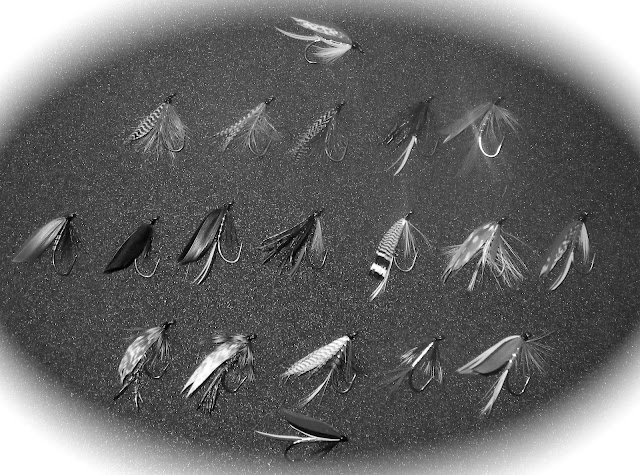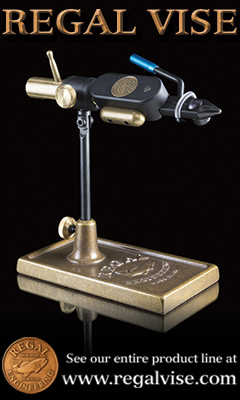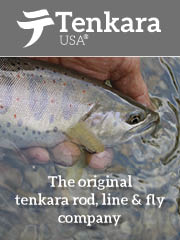 |
| Bob Jacklin's South Branch Chub |
One of my favorite streamers for my local waters is Bob Jacklin's South Branch Chub. Bob Jacklin resides in West Yellowstone, Montana and owns and operates
Jacklin's Fly Shop. Bob grew up in New Jersey and spent a lot of time fishing my home river the South Branch of the Raritan. He developed a trim little streamer pattern called the South Branch Chub which proved deadly on this and other local rivers. When he moved out west he took his patterns with him and they worked well in the Yellowstone region as well.
When I first tied this pattern it introduced me to a new fly tying material, Monga Ringtail. Monga Ringtail is a wide striped (bared black & white) tail with average hair length of about 2". It makes for outstanding streamer hair wing flies. The fur is fine, easy to work with and has great action in the water. The length of the hair it limits its usage to smaller streamers, which is possibly the reason it is not more popular as a fly tying material.
One of my most effective streamers last year for crappies and large mouth bass was a small streamer loosely based on this pattern. The fly retains the teal feather and black & white monga ringtail wing, but it is tied fuller and lacks the dubbing wax coating. The South Branch Chub is tied very sparse and the fibers are slicked back with a light coating of wax. Changes were made to the body material, a red throat was added and doll eyes and an epoxy head replaced the fragile and expensive jungle cock.
 |
| The Warmwater Chub |
I have never fished it as a trout fly but as a warmwater pattern it excels. Pickerel, Bass and Crappie jump all over this streamer.
Recipe:
Hook: #8 TMC 777SP
Thread: Black UTC 140 denier
Body: Pale Olive Bug Yarn
Throat: Red hackle fibers
Wing: Black over White Monga Ringtail
Over Wing: Teal feather fibers
Eyes: Small doll eyes coated with epoxy
This year I have been tying this pattern substituting
Clear Cure Goo for the epoxy and have found it to be a great substitute. I like to give it a finishing coat of clear nail polish to avoid stickiness you sometimes get with UV cured products.
 The only affiliation I have with Feather Craft is that I have been a long time customer and I just happened to be one of the winners in their last giveaway. So the least I could do is give them a plug.
The only affiliation I have with Feather Craft is that I have been a long time customer and I just happened to be one of the winners in their last giveaway. So the least I could do is give them a plug.



















